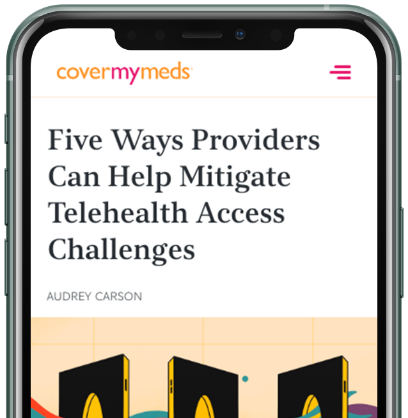Removing Barriers To Patient Care At The Pharmacy
Pharmacists need better support solutions at their fingertips so they can step into a better support role for patients.

In the last few months most people traveled very few places outside their front door — but if they did, one of those may have been their local pharmacy. In a national COVID-19 survey of patient behavior, nearly half of respondents said they feel very comfortable picking up their medications at their local pharmacy.FACT SHEET — COVID-19 Shifts Consumer Health Care Behavior Forty-seven percent of patients surveyed received a new medication in the last 90 days — and 90 percent of them picked it up in-person at a local retail pharmacy.FACT SHEET — COVID-19 Shifts Consumer Health Care Behavior
Pharmacists are essential workers, and, for many patients, the most accessible healthcare professionals they’ve known in the last few months, as most provider offices shifted to telemedicine or closed entirely. In fact, in a May survey of over 8,000 pharmacy owners and managers, 56 percent of respondents said they expect the COVID-19 pandemic will lead to an increased scope of practice that includes other healthcare services, in addition to dispensing medicine.Survey: COVID-19 Will Have Lasting Changes in the Way Local Pharmacies Operate, NCPA, 2020
Regulatory red tape
Unfortunately, keeping up with shifting regulations and policies among other operational tasks can often keep pharmacists from having a greater role in patient care.
Not only are they juggling new responsibilities such as COVID-19 testing and home delivery, their core duties are complicated by coverage rejections and prior authorization (PA). In response to the pandemic, many health insurance plans relaxed refill restrictions on certain drugs to allow longer times between patient visits for refills. These varied from plan to plan and, for government plans, often by state.
With current high unemployment rates across the country, researchers at the Kaiser Family Foundation estimate Medicaid enrollment could increase by 12.7 million people this year.3 Cuts to state Medicaid plans due to budget shortages could force plans to reduce the number of drugs on formulary.4 This likely means more PA requirements and therefore more paperwork at the pharmacy. Increased time spent on these operational tasks can reduce available time for patients.
When it comes to the PA process, most of the time and energy burden is on pharmacists. In a recent provider survey, 60 percent of respondents reported their practice completes PA requests retrospectively, after the pharmacy has notified them a PA request is required.CoverMyMeds Provider Survey, 2020 Why do providers avoid starting PA requests at the point of prescribing? For one, they don’t fully trust the plan formulary information supplied in their EHRs: Sixty percent reported they only sometimes trust the insurance data available in their EHR, while 19 percent reported they rarely or never trust this information.CoverMyMeds Provider Survey, 2020
It’s often the pharmacist who’s responsible for answering patients’ questions and initiating the PA. While the industry’s long-term goal should be to start more PA requests at the point-of-prescribing with the help of a real-time benefit check tool, pharmacists can benefit now from an automatic pharmacy PA solution.
Enabling patient care at the pharmacy
Patients have many options of pharmacies to choose from–and a longstanding pharmacy-patient relationship can be worth its weight in gold. Pharmacists need tools at their fingertips to automate the parts of the job that can be done through technology so they can handle the human element of their job: patient engagement.
There are opportunities in the pharmacy for tools to help patients find suitable alternatives when an original prescription is denied. This can include drug switch capabilities, cash pay alternatives and even manufacturer coupon availability.
To handle the possible increase in rejections that come with formulary changes, pharmacy tools should be a holistic reject solution for prescription decision support — to consider all options beyond PA. Of course, when a PA is the best path forward for the patient, solutions can help automate as much of the process as possible to reduce time spent interacting with providers and plans and ultimately to resolve issues while the patient is at the pharmacy.
The most effective prescription decision support tools are also integrated at the point of prescribing, identifying access barriers such as cost and options in addition to simply identifying PA requirements. The increased visibility may encourage providers to initiate PA requests prospectively if necessary as it presents itself as a more in-workflow option for providers. This enables a more efficient prescription claim process at the pharmacy, saving patients valuable time and opening the door for more productive conversations at the pharmacy.
At CoverMyMeds, we are working with providers, payers and pharmacies to help decrease PA turnaround times so pharmacists can practice to the full extent of their license and truly be patient engagement specialists. Learn more about our automated pharmacy solutions.
The latest healthcare insights, floated right to your inbox.





